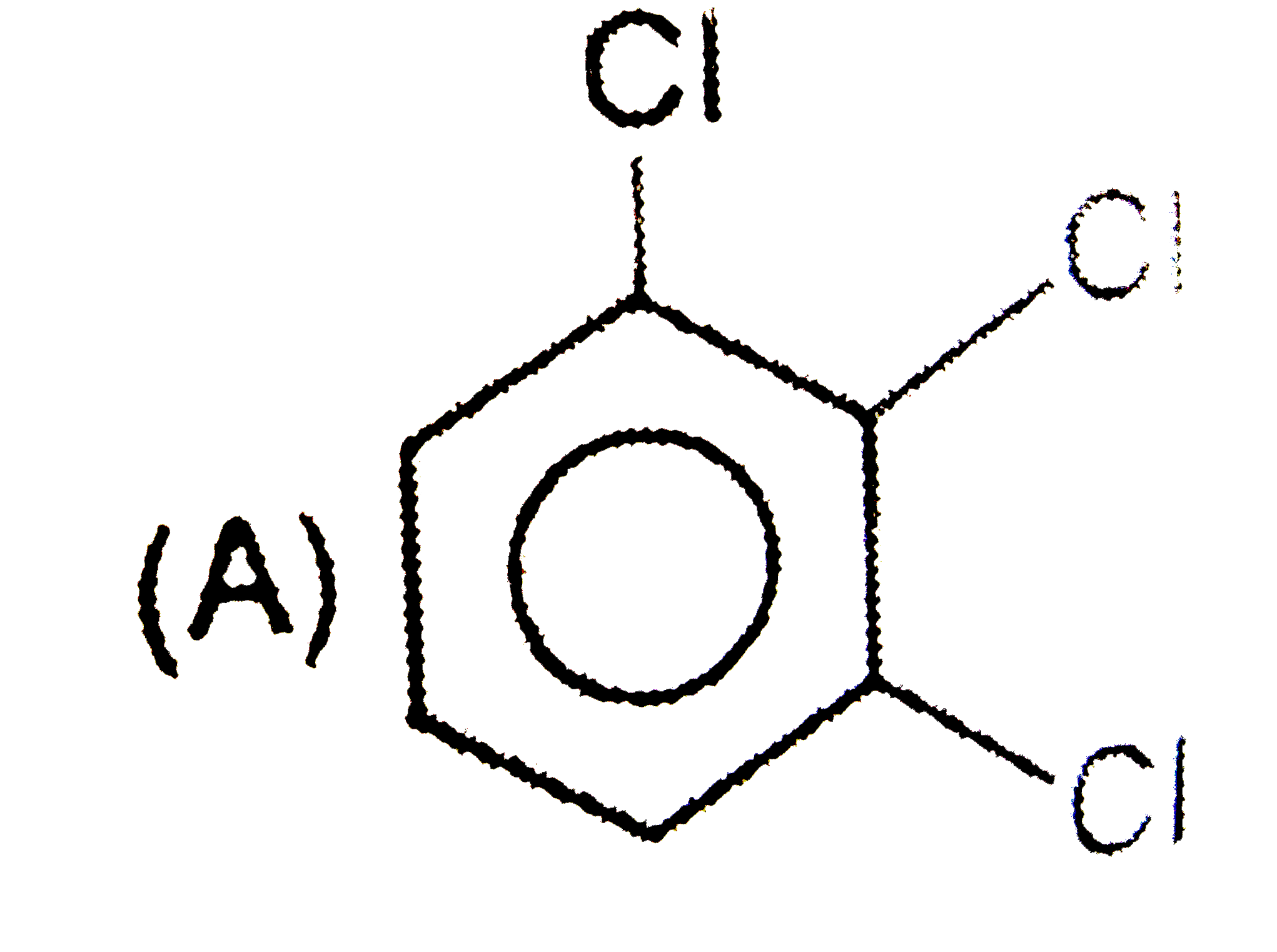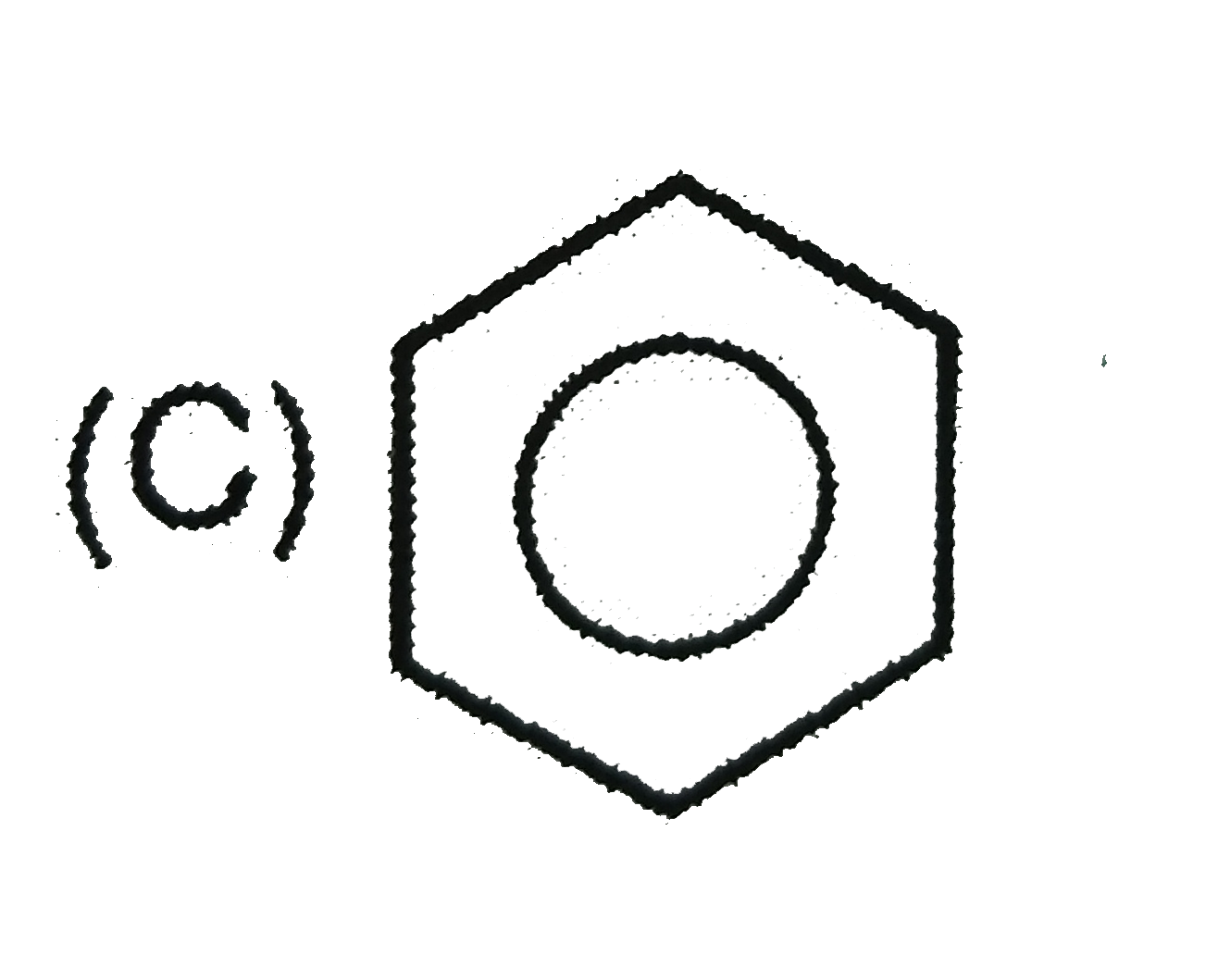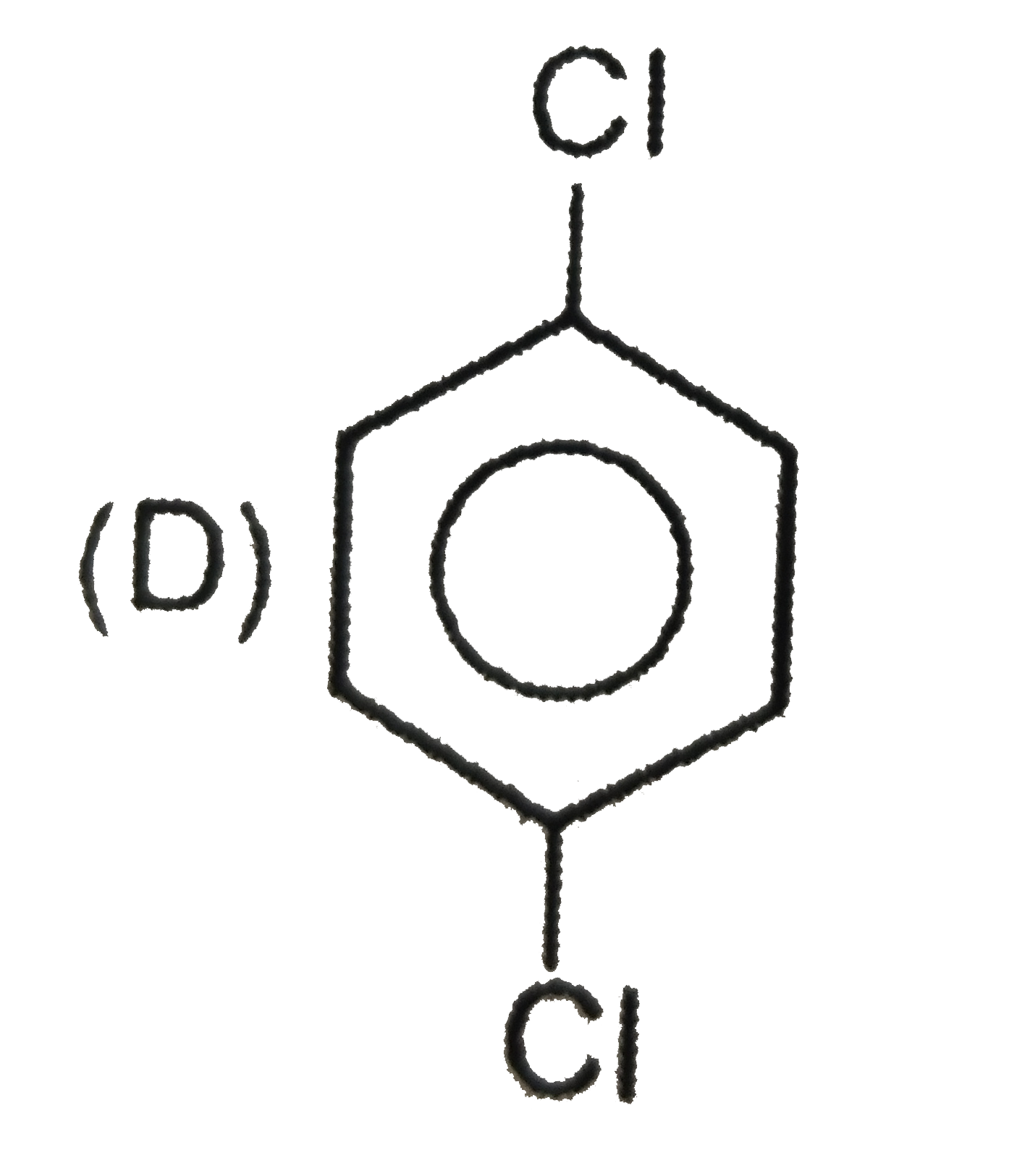When the all-cis isomer of C6H6Cl6 (1,2,3,4,5,6 -Hexachlorohexane) is heated with alc. KOH, the most probable product is :




The correct Answer is:B
To solve the problem of what product is formed when the all-cis isomer of C6H6Cl6 (1,2,3,4,5,6-hexachlorohexane) is heated with alcoholic KOH, we can follow these steps:
1. Identify the Structure of the Compound:
- The compound is 1,2,3,4,5,6-hexachlorohexane, which has all chlorine atoms in the same plane (all-cis isomer). This means that all the Cl atoms are either above or below the plane of the carbon chain.
2. Understand the Reaction Conditions:
- The reaction involves heating with alcoholic KOH. KOH in alcohol acts as a strong base, which will facilitate elimination reactions.
3. Mechanism of Reaction:
- The mechanism involved here is E1cb (Elimination Unimolecular via Conjugate Base). In this mechanism, the base (OH-) abstracts a hydrogen atom from the β-carbon (the carbon adjacent to the carbon bearing the leaving group, Cl in this case).
4. Identify β-Hydrogens:
- In the structure of 1,2,3,4,5,6-hexachlorohexane, each carbon has a hydrogen atom that can be abstracted by OH-. Since all Cl atoms are in the same plane, the elimination will occur in a way that allows for the formation of a double bond.
5. Elimination of Chlorine Atoms:
- The elimination will proceed with the loss of Cl atoms. As OH- abstracts a hydrogen, a Cl atom will leave, forming a double bond. This process will continue, leading to the formation of a product with multiple double bonds.
6. Final Product Formation:
- After the elimination of three Cl atoms, the resulting product will be 1,3,5-trichlorobenzene. The remaining structure will have alternating double bonds due to the elimination of Cl atoms.
Conclusion:
The most probable product when the all-cis isomer of C6H6Cl6 is heated with alcoholic KOH is 1,3,5-trichlorobenzene.
- The compound is 1,2,3,4,5,6-hexachlorohexane, which has all chlorine atoms in the same plane (all-cis isomer). This means that all the Cl atoms are either above or below the plane of the carbon chain.
- The reaction involves heating with alcoholic KOH. KOH in alcohol acts as a strong base, which will facilitate elimination reactions.
- The mechanism involved here is E1cb (Elimination Unimolecular via Conjugate Base). In this mechanism, the base (OH-) abstracts a hydrogen atom from the β-carbon (the carbon adjacent to the carbon bearing the leaving group, Cl in this case).
- In the structure of 1,2,3,4,5,6-hexachlorohexane, each carbon has a hydrogen atom that can be abstracted by OH-. Since all Cl atoms are in the same plane, the elimination will occur in a way that allows for the formation of a double bond.
- The elimination will proceed with the loss of Cl atoms. As OH- abstracts a hydrogen, a Cl atom will leave, forming a double bond. This process will continue, leading to the formation of a product with multiple double bonds.
- After the elimination of three Cl atoms, the resulting product will be 1,3,5-trichlorobenzene. The remaining structure will have alternating double bonds due to the elimination of Cl atoms.
The most probable product when the all-cis isomer of C6H6Cl6 is heated with alcoholic KOH is 1,3,5-trichlorobenzene.
Topper's Solved these Questions
- ORGANIC REACTION MECHANISMS-IVBOOK - RESONANCE ENGLISHCHAPTER - ORGANIC REACTION MECHANISMS-IVEXERCISE - APSP PART-2
17 Videos
- ORGANIC REACTION MECHANISMS - IIBOOK - RESONANCE ENGLISHCHAPTER - ORGANIC REACTION MECHANISMS - IIEXERCISE - APSP Part - 3
22 Videos
- PERIODIC TABLE & PERIODICITYBOOK - RESONANCE ENGLISHCHAPTER - PERIODIC TABLE & PERIODICITYEXERCISE - ORGANIC CHEMISTRY(BASIC CONCEPTS)
27 Videos
Similar Questions
Draw the functional isomer of C3H6O .
View SolutionNumber of isomers of C5H6
View SolutionWhen C6H5N2Cl is reduced with Na2SnOO2, the product is :
View SolutionWrite the possible isomers of the C6H4(OH)2
View SolutionWrite the possible isomers of the C6H4(CH3)2
View SolutionIdentify the product formed when C6H6Cl6 is heated with alc. KOH
View SolutionThe number of isomers of C6H14 is:
View SolutionThe number of structural isomers for C6H14 is
View SolutionThe number of structural isomers for C6H14 is :
View SolutionDraw the structural isomer of C3H6Cl2 which can exhibit optical isomerism.
View Solution
